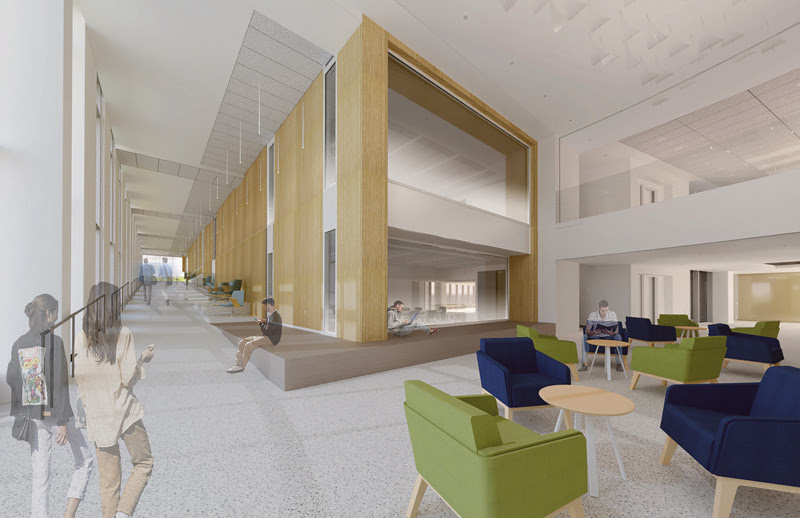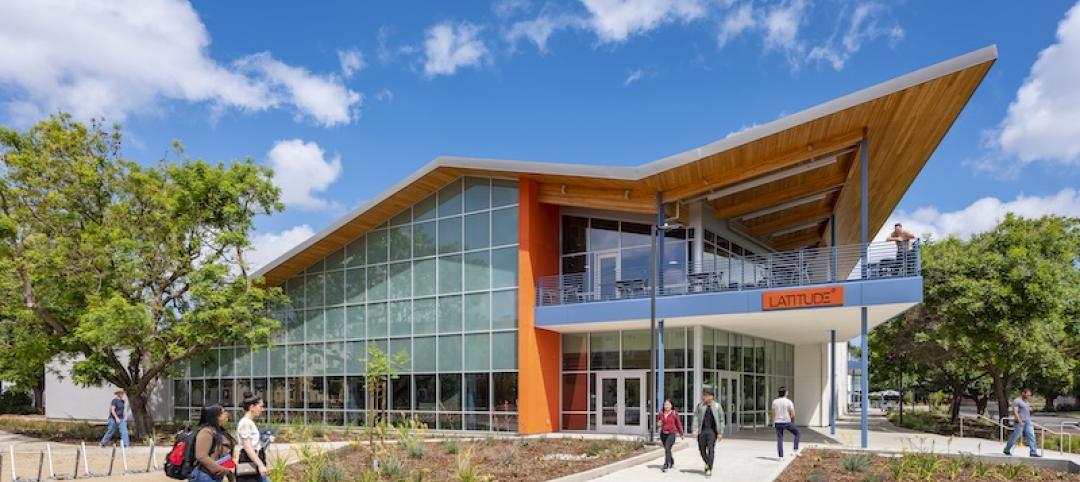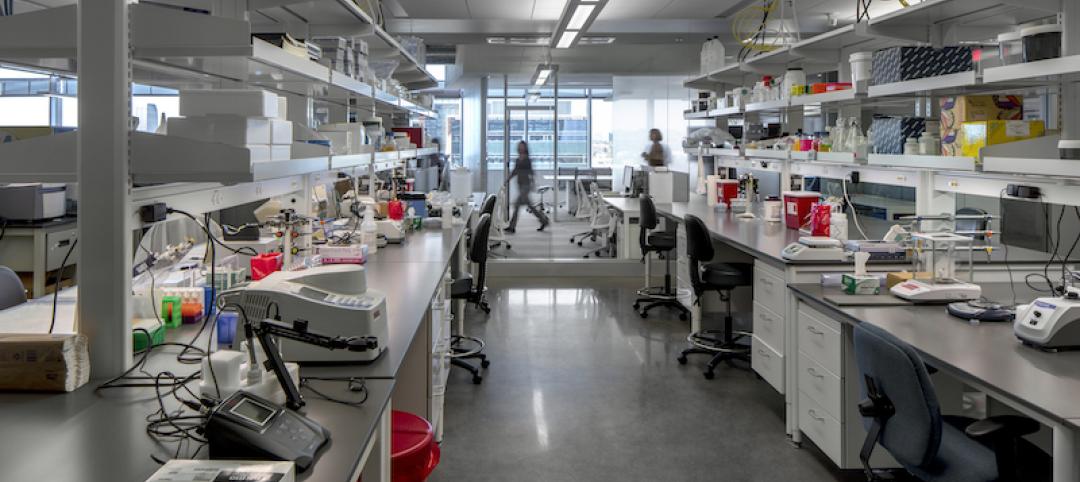The University of Maryland has a new landmark architectural presence in its new School of Public Policy building.
The building’s design concept is rooted in the spatial typology of the ancient Agora, the birthplace of democratic thought and public discourse. The cascading architectural form follows the natural slope of Chapel Field to form an edge to one of the signature open spaces on campus and shape a carefully orchestrated sequence of interior spaces.

Entrances on the east and west sides connect to a large, communal atrium designed to encourage chance meetings, informal study, and interdepartmental collaboration. On the building’s east side is Do Good Plaza, a shared outdoor event space that establishes a new gateway into campus. Brick cladding and white columns connect visually with Lee Hall to the north while the building’s sculpted massing frames Rossborough Inn to the northeast and memorial Chapel to the southwest.

The four-story building brings together the School’s more than 90 faculty members and over 1,000 undergraduate and graduate students and serves as the headquarters for the Do Good Institute, a campus-wide hub for social innovation, philanthropy, and nonprofit leadership. The facility will also include five instructional spaces ranging in size from 25 to 150 seats, a library, and a rooftop terrace.
See Also: South-West Middle School welcomes its first students
The School of Public Policy is expected to achieve LEED Gold rating with biophilic design elements that will connect occupants to nature, reduce the building’s environmental footprint, and provide healthy and productive spaces for work and study.
Related Stories
Giants 400 | Aug 28, 2020
2020 Giants 400 Report: Ranking the nation's largest architecture, engineering, and construction firms
The 2020 Giants 400 Report features more than 130 rankings across 25 building sectors and specialty categories.
University Buildings | Aug 27, 2020
Eight strategies for achieving successful P3 development models
Transparency and communication are imperative, says new white paper on these agreements.
University Buildings | Aug 20, 2020
Student housing in the COVID-19 era
Student housing remains a vital part of the student and campus experience.
University Buildings | Aug 12, 2020
The University of Toronto’s new learning and support hub is a ‘learning landscape’
ZAS Architects designed the building.
University Buildings | Aug 11, 2020
UC Davis’s new dining commons is a nod to the region’s agricultural roots
HED designed the project.
University Buildings | Aug 5, 2020
Oklahoma State University’s North Academic Building begins construction
Dewberry designed the project.
University Buildings | Aug 3, 2020
5 reasons universities are renovating student housing
Clark Nexsen’s Student Life practice leader, Peter Aranyi, discusses the benefits of renovation and why it offers particular value to campuses nationwide.
University Buildings | Aug 2, 2020
R&D hubs, modular-built hotels, and an award-winning student center on the August 6 “The Weekly”
R&D hubs, modular-built hotels, and an award-winning student center on the August 6 “The Weekly”
University Buildings | Jul 24, 2020
A hybrid learning approach could redefine higher education
Universities reassess current assets to determine growth strategies.
Laboratories | Jul 24, 2020
Customized labs give universities a recruiting edge
CO Architects is among a handful of firms that caters to this trend.

















